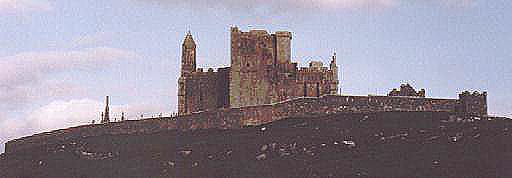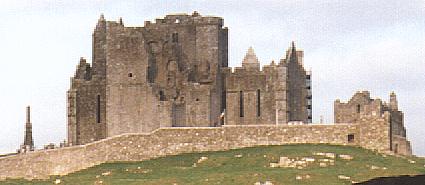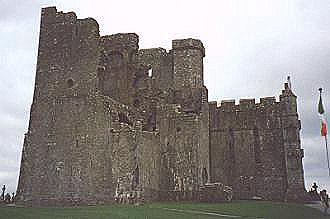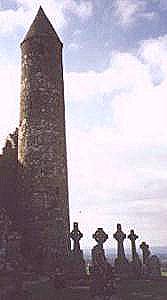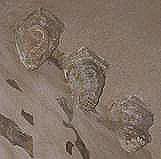|
|
 |
|
|
The Rock of Cashel is one of the most spectacular archeological sites in Ireland. It sits on the outskirts of Cashel on a large mound of limestone bristling with ancient fortifications. Mighty stone walls encircle a complete round tower, a roofless abbey, a 12th century Romanesque chapel, and numerous other buildings and high crosses. The Rock of Cashel is composed four structures which are the Hall of the Vicars Choral, the cathedral, the round tower, and Cormac's Chapel. Hore Abbey is about one kilometer north at the base of the rock. The word Cashel is an anglicized version of the Irish word Caiseal. The translations means 'fortress' which is exactly what it was used for. In the 4th century, the Rock of Cashel was chosen as a base of power by the Eoghanachta clan from Wales. They eventually conquered much of the Munster region and became kings of the region. The clan's links to the church started early; St. Patrick converted their leader in the 5th century in a ceremony in which the saint accidently stabbed the king in the foot with his crozier (a large walking staff). The king, thinking this was a painful initiation rite, bore the pain. Considering the actions taken by St. Patrick on other occasions against nonbelievers, possibly he was afraid to react. The clan lost possession of the Rock in the 10th century to the O'Brien tribe under the leadership of Brian Boru. In the first year of the 12th century, King Muircheartach O'Brien gave the Rock to the church. This move prevented the Eoghanachta clan from retaking the Rock. So the Eoghanachta clan, by now the McCarthys, moved to Cork. As a sign of goodwill, Cormac McCarthy built Cormac's Chapel in 1169 before leaving. In 1647, the Rock fell to a Cromwellian army under Lord Inchiquin which sacked and burned its way to the top. Early in the 18th century the Protestant church took it for 20 years, and this was the last time the Rock was officially used as a place of worship. The Cathedral Hall of the Vicars Choral The Round Tower
Cormac's Chapel
|
© The O'Brien Clan Since 1997 |
